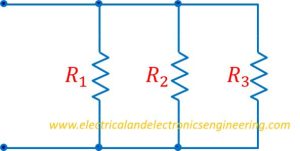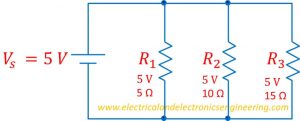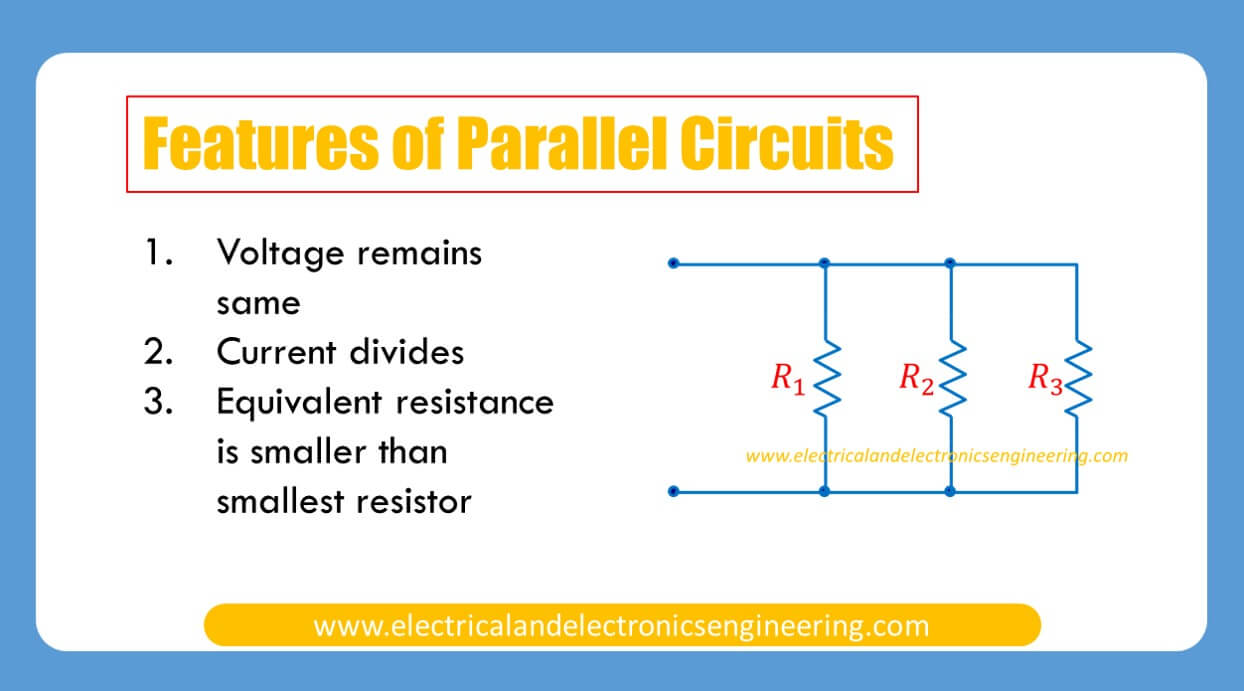An Electrical Circuit is a combination of two or more components that are connected together to obtain some objective.
Electrical components can be arranged in two configurations: Series or Parallel. In this article, you’ll learn the basics of parallel circuits.
What is Parallel Circuit and How to identify it
A parallel circuit is the one in which one terminal of components are connected at one node (junction point), while the other terminal of components is connected at another node (junction point).

The upper terminal of all three resistors are connected together at top node, while the bottom terminal of all resistors are connected to the bottom node and there is no other connection. All three resistors are parallel to each other and this satisfied our condition of parallel circuits.
How resistance behaves in parallel
The overall resistance of the parallel circuit is smaller than the smallest resistance. The basic formula to calculate parallel resistance:

Let’s solve an example to understand this:
Statement: Three resistors R1 = 20 Ω, R2 = 15 Ω , R3 = 10 Ω are connected in parallel. Find the equivalent resistance.
Solution: 1/Req = (1/R1) + (1/R2) + (1/R3)
1/Req = (1/20) + (1/15) + (1/10)
1/Req = 0.05 + 0.066 + 0.1
1/Req = 0.216
Req = 1/0.216
Req = 4.62 ohms
How voltage behaves in parallel
The input electrical voltage adjusts itself in such a manner that across all parallel components it stays the same.
With Reference to figure 1, if we apply 10 volts on input then all resistors R1, R2, and R3 will have the same voltage drop across them.
Let’s assume that input source if 5 V DC battery, connected to resistors of 5, 10, and 15 ohms, then all resistors will have same voltage drop across them.

How Current behaves in parallel
Electric current in parallel circuit always divides in such as way that it is inversely related to resistance i.e the higher the resistance, the lower is current and vice versa.
As an example in previous case, the current across R1, R2, R3 is 1, 0.5, and 0.33 Amps respectivly.
I (R1) = V/R1 = 5 volt/ 5 ohms = 1 Amps
I (R2) = V/R2 = 5 volt/ 10 ohms = 0.5 Amps
I (R3) = V/R3 = 5 volt/ 15 ohms = 0.33 Amps
